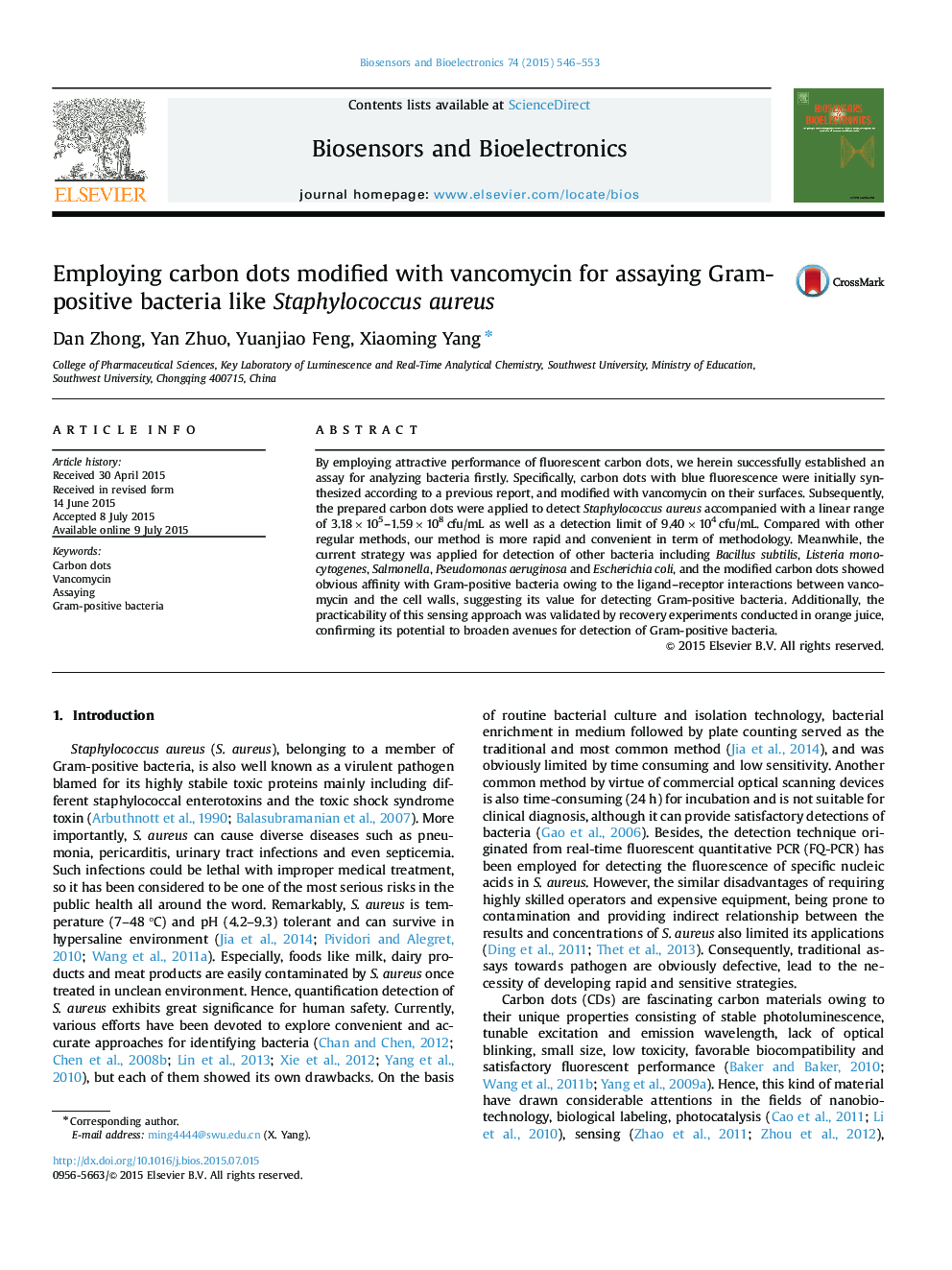| Article ID | Journal | Published Year | Pages | File Type |
|---|---|---|---|---|
| 7231804 | Biosensors and Bioelectronics | 2015 | 8 Pages |
Abstract
By employing attractive performance of fluorescent carbon dots, we herein successfully established an assay for analyzing bacteria firstly. Specifically, carbon dots with blue fluorescence were initially synthesized according to a previous report, and modified with vancomycin on their surfaces. Subsequently, the prepared carbon dots were applied to detect Staphylococcus aureus accompanied with a linear range of 3.18Ã105-1.59Ã108Â cfu/mL as well as a detection limit of 9.40Ã104Â cfu/mL. Compared with other regular methods, our method is more rapid and convenient in term of methodology. Meanwhile, the current strategy was applied for detection of other bacteria including Bacillus subtilis, Listeria monocytogenes, Salmonella, Pseudomonas aeruginosa and Escherichia coli, and the modified carbon dots showed obvious affinity with Gram-positive bacteria owing to the ligand-receptor interactions between vancomycin and the cell walls, suggesting its value for detecting Gram-positive bacteria. Additionally, the practicability of this sensing approach was validated by recovery experiments conducted in orange juice, confirming its potential to broaden avenues for detection of Gram-positive bacteria.
Related Topics
Physical Sciences and Engineering
Chemistry
Analytical Chemistry
Authors
Dan Zhong, Yan Zhuo, Yuanjiao Feng, Xiaoming Yang,
